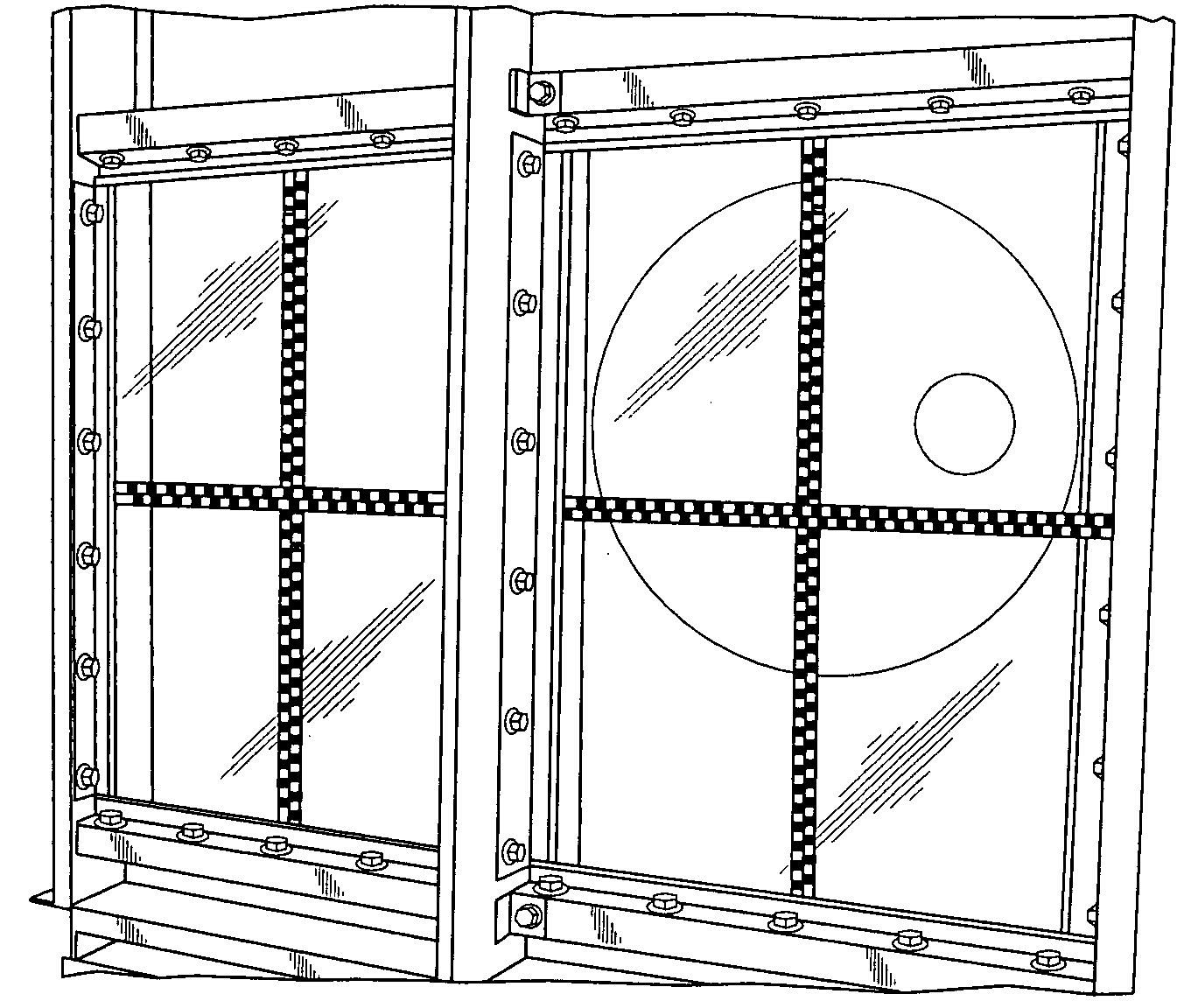High-energy impact absorbing polycarbonate mounting method
a technology of high-energy impact and polycarbonate, which is applied in the direction of protective equipment, weapons, armour, etc., can solve the problems of dangling glass remnants, affecting the safety of workers, and affecting the safety of workers, and causing the damage of life and property
- Summary
- Abstract
- Description
- Claims
- Application Information
AI Technical Summary
Benefits of technology
Problems solved by technology
Method used
Image
Examples
examples
[0053]The present invention is further illustrated, but is not to be limited, by the following examples.
[0054]Two 48 inch by 66 inch, 0.375 inch thick transparent monolithic polycarbonate panels were mounted to a traditional, non-active (non-flexing) frame and fastened to a shock tube as shown in FIG. 4. The polycarbonate panels were wet-glazed into the frame using an industry standard silicone. The panels both had an abrasion-resistant hard-coat applied to the surfaces. The panels were tested at near DOD (U.S. Department of Defense) loads of 6.5 psi and 61 psi-msec, pressure and impulse, respectively. Both panels failed catastrophically as shown in FIG. 5.
[0055]However, when the same panels were mounted according to the inventive bi-active framing method where the two longer sides were attached through cylindrical hardware to semi-rigid (flexing) metal frame sections, computer simulation predicted only a minor crack in the panel, as shown in FIG. 6 (a quarter-symmetric model). This...
PUM
| Property | Measurement | Unit |
|---|---|---|
| Thickness | aaaaa | aaaaa |
| Thickness | aaaaa | aaaaa |
| Length | aaaaa | aaaaa |
Abstract
Description
Claims
Application Information
 Login to View More
Login to View More - R&D
- Intellectual Property
- Life Sciences
- Materials
- Tech Scout
- Unparalleled Data Quality
- Higher Quality Content
- 60% Fewer Hallucinations
Browse by: Latest US Patents, China's latest patents, Technical Efficacy Thesaurus, Application Domain, Technology Topic, Popular Technical Reports.
© 2025 PatSnap. All rights reserved.Legal|Privacy policy|Modern Slavery Act Transparency Statement|Sitemap|About US| Contact US: help@patsnap.com



